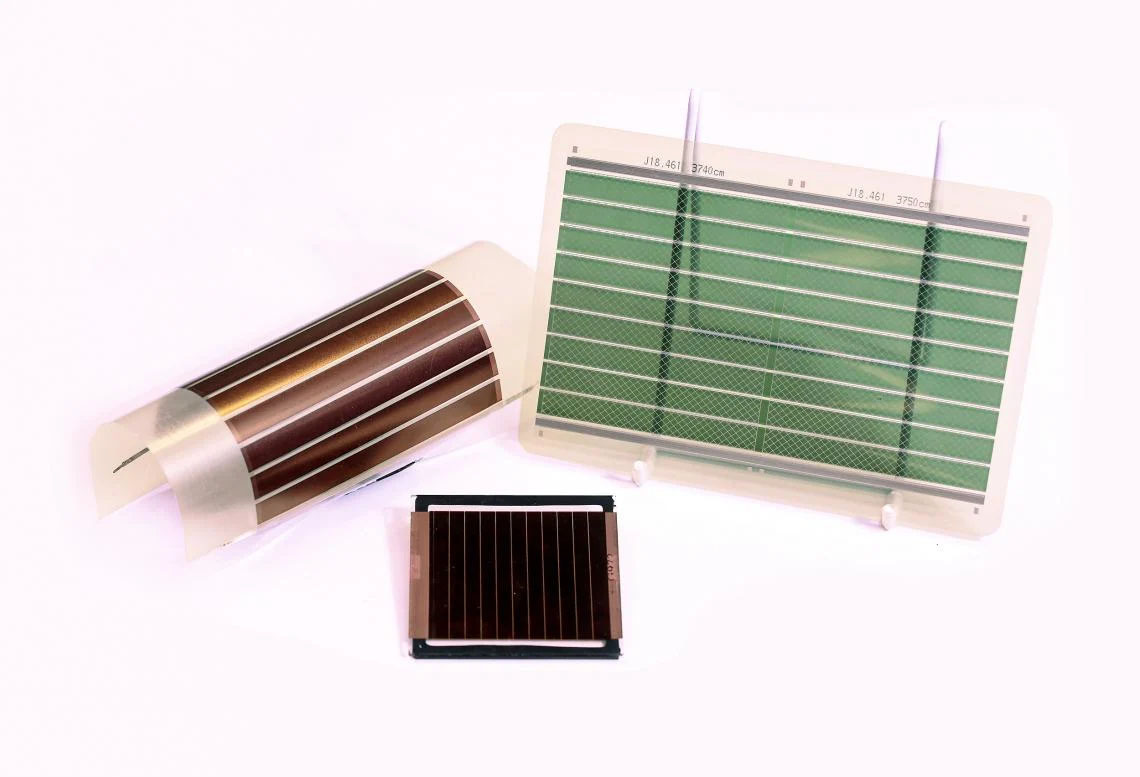| Mar 10, 2023 |
| |
|
(Nanowerk News) Researchers at City University of Hong Kong (CityU) have found a way to significantly enhance the efficiency of carbon-based (organic) photovoltaic cells, commonly known as solar cells. The advance, reported in the journal Nature Energy (“Suppressed recombination loss in organic photovoltaics adopting a planar–mixed heterojunction architecture”), helps the drive towards cleaner and greener solar power systems known as organic photovoltaics (OPVs).
|
|
All photovoltaic systems use sunlight to generate electric current. Making them from organic molecules could offer advantages over the current silicon-based systems, including better material sustainability, low costs, light weight, physical flexibility and more readily renewable manufacturing processes. At present, unfortunately, OPV systems are not as efficient as existing options, with power conversion efficiencies of around 18% compared to 26% for silicon ones.
|
 |
| The new organic photovoltaics based on a rigid glass (centre), and light-weight plastic that provides mechanical flexibility (left) and even semi-transparency (right). The mechanical flexibility provides more options to harness solar energy, such as power-generating windows and wearable electronics along with traditional solar farms. (Image: City University of Hong Kong)
|
|
The initial key step in photovoltaic energy capture comes when sunlight causes a separation of electrically charged particles, generally by kicking a negatively charged electron out of a light-sensitive molecule. The separated charges eventually generate the electric power output of the system. OPV methods have suffered a problem, however, in which the separated charges can recombine before being efficiently collected to generate electricity.
|
|
“We have overcome this obstacle by inventing a novel device-engineering strategy to suppress the energy conversion loss, resulting in record-breaking efficiency,” says CityU materials scientist Alex Jen Kwan-yue, who led the research team.
|
|
The key to the innovation lies in a crucial feature of the semiconducting OPV system called the heterojunction. This is where electric charge is transferred from donor to acceptor molecules. Until now, the donor and acceptors have generally been intermixed in a way called a “bulk-heterojunction” to facilitate separation of charges. However, this can also allow significant recombination of the separated charges, leading to power losses.
|
|
The CityU team devised a different junction architecture, which is sequentially built up into a less well-intermixed arrangement. This suppresses the unwanted recombination of charges to an extent that has achieved conversion of solar to electrical power at efficiencies as high as 19%. The team expects to be able to move beyond 20% soon, which would take OPV systems into the realm of commercial feasibility.
|
|
To support the transition from the lab to the market, they have now applied for a patent for their technology.
|
|
One interesting and unexpected technical finding from the research was that having fewer donor-acceptor contacts in the new planar-mixed heterojunction architecture improves performance. This fundamentally changes researchers’ previous belief that more donor-acceptor contacts must lead to better performance. This insight could be important for driving research towards further improvements in OPV technology.
|
|
Francis Lin, another key member of the CityU research team, comments: “Our strategy should enable the development of OPVs that can compete with traditional inorganic photovoltaics, while benefitting from all the advantages offered by working with organic materials.”
|
- SEO Powered Content & PR Distribution. Get Amplified Today.
- Platoblockchain. Web3 Metaverse Intelligence. Knowledge Amplified. Access Here.
- Source: https://www.nanowerk.com/news2/green/newsid=62549.php

